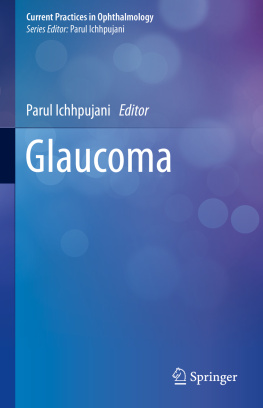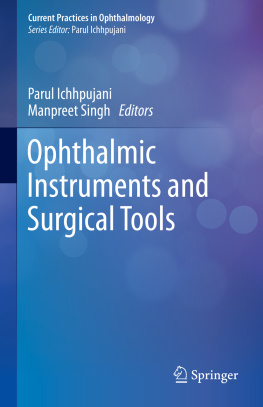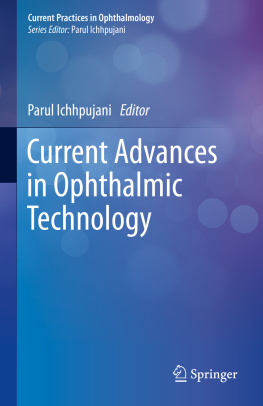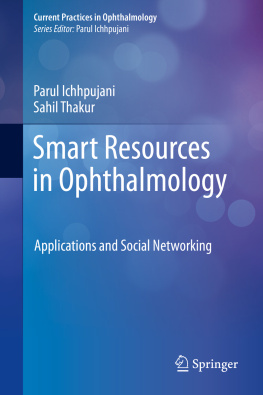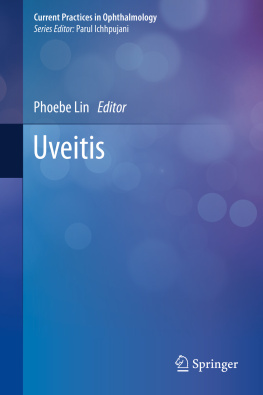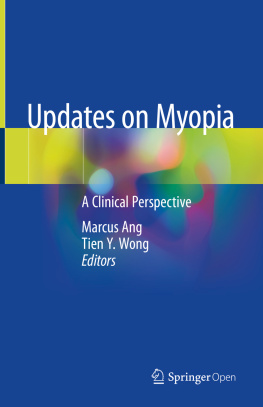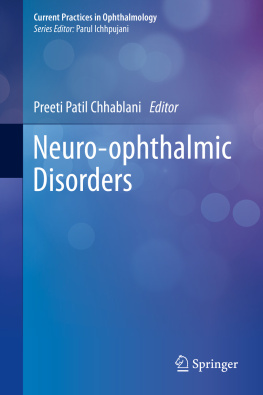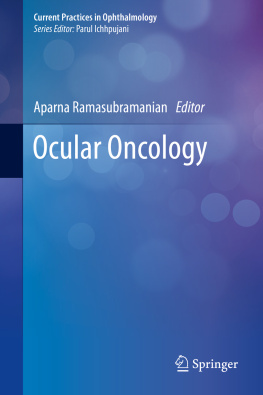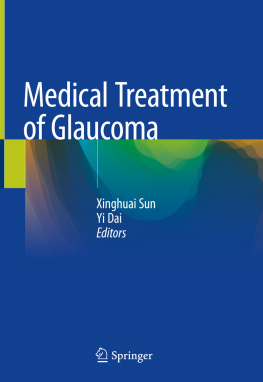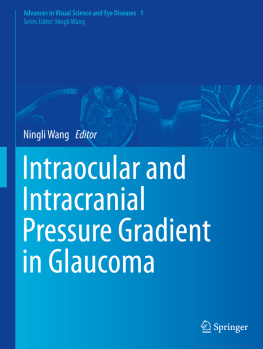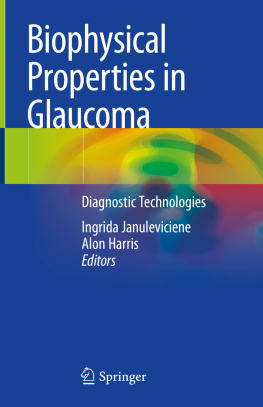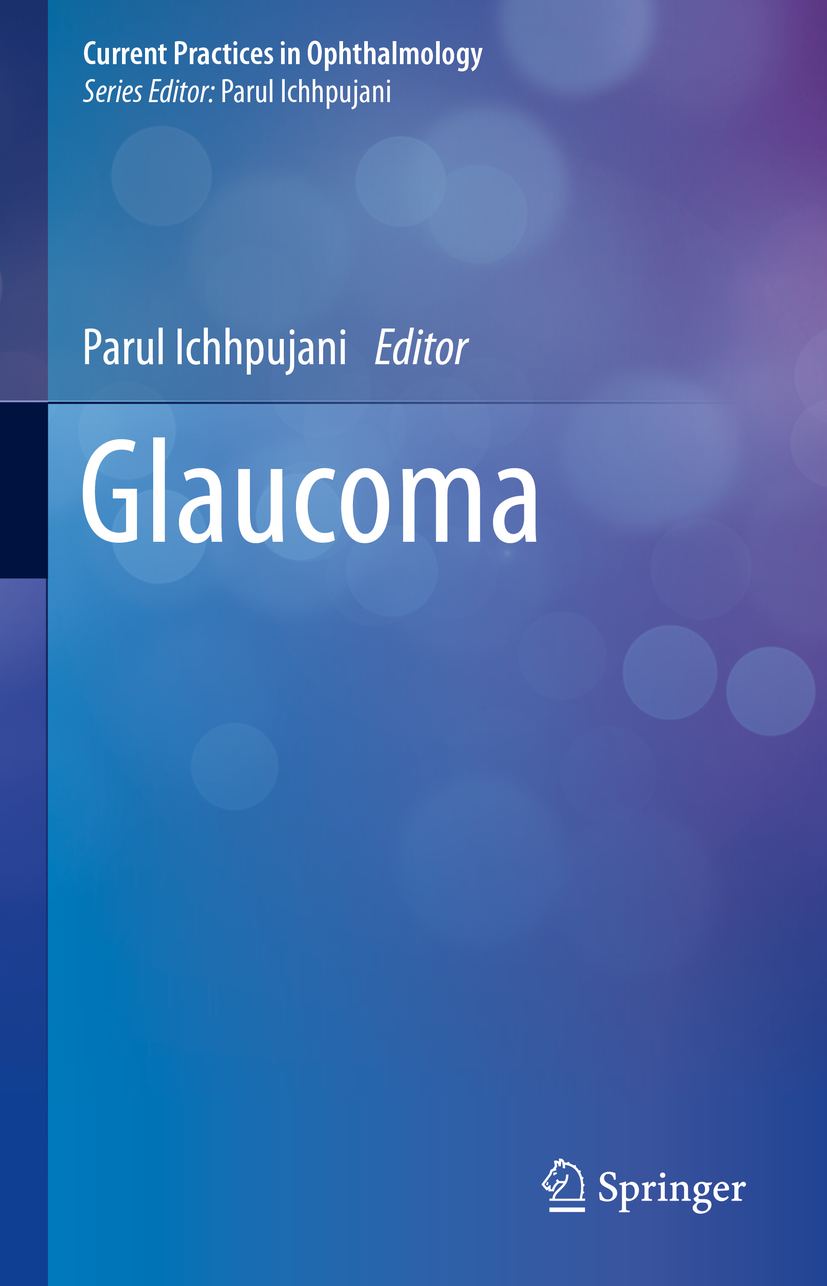Current Practices in Ophthalmology
Series Editor
Parul Ichhpujani
Department of Ophthalmology, Government Medical College and Hospital, Chandigarh, India
This series of highly organized and uniform handbooks aims to cover the latest clinically relevant developments in ophthalmology. In the wake of rapidly evolving innovations in the field of basic research, pharmacology, surgical techniques and imaging devices for the management of ophthalmic disorders, it is extremely important to invest in books that help you stay updated. These handbooks are designed to bridge the gap between journals and standard texts providing reviews on advances that are now part of mainstream clinical practice. Meant for residents, fellows-in-training, generalist ophthalmologists and specialists alike, each volume under this series covers current perspectives on relevant topics and meets the CME requirements as a go-to reference guide. Supervised and reviewed by a subject expert, chapters in each volume provide leading-edge information most relevant and useful for clinical ophthalmologists. This series is also useful for residents and fellows training in various subspecialties of ophthalmology, who can read these books while at work or during emergency duties. Additionally, these handbooks can aid in preparing for clinical case discussions at various forums and examinations.
More information about this series at http://www.springer.com/series/15743
Editor
Parul Ichhpujani
Department of Ophthalmology, Government Medical College and Hospital, Chandigarh, India
ISSN 2523-3807 e-ISSN 2523-3815
Current Practices in Ophthalmology
ISBN 978-981-13-8456-1 e-ISBN 978-981-13-8457-8
https://doi.org/10.1007/978-981-13-8457-8
Springer Nature Singapore Pte Ltd. 2019
This work is subject to copyright. All rights are reserved by the Publisher, whether the whole or part of the material is concerned, specifically the rights of translation, reprinting, reuse of illustrations, recitation, broadcasting, reproduction on microfilms or in any other physical way, and transmission or information storage and retrieval, electronic adaptation, computer software, or by similar or dissimilar methodology now known or hereafter developed.
The use of general descriptive names, registered names, trademarks, service marks, etc. in this publication does not imply, even in the absence of a specific statement, that such names are exempt from the relevant protective laws and regulations and therefore free for general use.
The publisher, the authors, and the editors are safe to assume that the advice and information in this book are believed to be true and accurate at the date of publication. Neither the publisher nor the authors or the editors give a warranty, expressed or implied, with respect to the material contained herein or for any errors or omissions that may have been made. The publisher remains neutral with regard to jurisdictional claims in published maps and institutional affiliations.
This Springer imprint is published by the registered company Springer Nature Singapore Pte Ltd.
The registered company address is: 152 Beach Road, #21-01/04 Gateway East, Singapore 189721, Singapore
Foreword
Dr. Parul Ichhpujani hasin this textcondensed current teaching about most of the new technologies and concepts in the field of glaucoma. This is a great accomplishment and a useful one.
She set herself a difficult task, as basic concepts about glaucoma, what it is, and how it is best diagnosed and treated are in transition and new technologies arrive daily! Those relatively new to the field may find it hard to believe that as recently as 50 years ago, the diagnosis of glaucoma was easy; one simply measured the pressure within the eye! That sadly incorrect method of thinking lingers on, unfortunately. Also, there was a widespread belief that the size of the optic nerve head cup was of essential importance in diagnosing and following patients with glaucoma. However, it is now clear that the size of the cup is poorly correlated with diagnostic and functional status and that cup/disc ratios should no longer be used; they mislead more than help. It is the pattern of the nerve appearance that is hugely helpful. Some authors now use phrases such as pressure-independent glaucoma, while others believe that pressure is in some way always at least partially responsible for the damage that occurs in glaucoma. One of the essential pieces of informationthe appearance of the anterior chamber angleis today incorrectly evaluated in over two-thirds of individuals!
As a result, blindness from primary angle closure glaucoma is the leading cause of permanent blindnessdespite being easy to diagnose and treat successfully! Most of those (perhaps more than 90%) with glaucoma do not even get diagnosed, and for the relatively few that do, treatment options are so wildly diverse that the practitioner must wonder what to do.
What is certain is that thinking and acting regarding glaucoma are in a messy transition.
This book is a highly informative read for all interested in the field. The chapters are well-referenced, allowing the reader to go beyond the helpful material in the chapters themselves.
To me the major things to stress are:
Prior methods of basing diagnosis and care on average values did not and still do not work; data must be personalized. Mean eye pressure, isolated measurement of retinal nerve fiber layer thickness, central corneal thickness, and cup/disc ratios are useless or worse, because they divert the examiner from what is truly essential.
To be useful, data must be valid (i.e., accurate, consonant with reality) and relevant (i.e., pertinent for the person being considered). They should also be the result of socially responsible data acquisition methods. Valid, irrelevant, unsustainable data should not be obtained. Prior to recommending any test or procedure, the physician needs to ask the following: Will the data obtained be accurate and relevant for this particular person, and is the cost justified? Unless the answers to the two questions are a solid yes, the test or procedure should not be done, unless scientifically sound methods are applied to study the validity, relevance, and sustainability of what is being considered.
While there is as great deal still to learn, present methods, when applied well, work well for most individuals. There is no substitute for an empathetic, comprehensive, history designed to find symptoms and establish their chronology; an accurate, sensitive means of assessing visual ability; an accurate gonioscopy; a correct evaluation of pupillary responses; an estimate of the intraocular pressure with a simple instrument such as an applanation tonometer or the fingers; and a meticulous evaluation of the optic nerve head through a dilated pupil. There is still truth in the old saying that the time to try a treatment is before learning that it does not work.
One of the most exciting next steps is the confirmation by Caprioli and others that following adequate lowering of intraocular pressure fields improves. While this has been suggested in the past, few believed it. The reality of disc improvement has been proven since von Jaeger reported it in 1869; but even now, few recognize that it is common. The clinical implication of this improvement is that it may allow, for the first time, a valid, relevant method of determining how much the intraocular pressure needs to be lowered in order to assure the best chance of no further disease progression.

